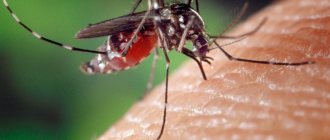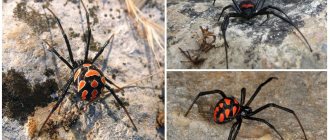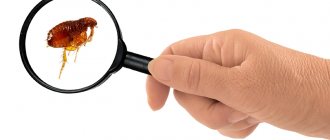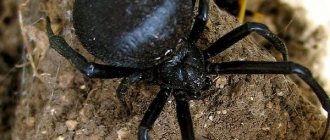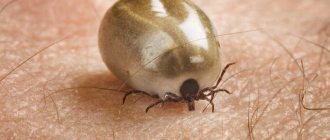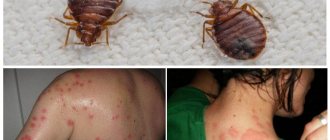When the long-awaited summer arrives, people happily go out into nature, gardeners go to their garden plots in flocks, and children run carefree barefoot on the grass. But in all this natural splendor, and even at home, a person faces a subtle danger in the form of ticks. Forewarned means protected, and in our article there are the most dangerous ticks in the world, which can cause irreparable harm to human health, and in some cases their bites are fatal.
Interesting fact! It is incorrect to call mites insects, because they belong to the class of arachnids, although together with insects they belong to the phylum of arthropods.
Ixodid ticks / Ixodida
The most dangerous family of ticks, numbering more than 650 species, belongs to the large order Ixodida. These small creatures are dangerous because they are carriers of diseases that are fatal to humans - tick-borne encephalitis and tick-borne borreliosis (Lyme disease).
These tiny animals live in all corners of our planet, and even in Antarctica they parasitize the bodies of penguins and birds. Adults grow up to 4 mm, and when filled with blood, reach a size of 10 mm. In Russia, ticks are found almost everywhere, except in arid places.
One clutch can contain up to 15 thousand eggs, but only a few survive during development. These dangerous creatures live from 2 to 3 years.
And now a little more about the representatives of the dangerous family of Ixodid ticks...
1
Habitats
Almost everywhere, these arachnid creatures live on everything
continents (except perhaps Antarctica) and in all climatic zones. As habitats, many species of ticks prefer wet places near water bodies: thickets near river banks, flooded meadows, forest ravines. Some ticks are able to live both in salt water of seas and oceans, and in fresh rivers and lakes. There are mites that live in houses and apartments, in animal fur (house mites, flour mites, dust mites).
Black-legged tick / Ixodes scapularis
An inhabitant of the forest-steppe zone of Europe, the black-legged tick, when bitten, can infect a person with Lyme disease, as well as many other diseases: babesiosis and human granulocytic anaplasmosis.
Ixodes scapularis got its name from the characteristic black coloration of its limbs. Therefore, it is easy to identify among a wide variety of other species.
They are slow bloodsuckers, and after a bite they fill with blood within 4-5 days. But it is advisable to immediately detect it on your body and remove it yourself or with the help of doctors. Although, if you are not planning a trip to the east coast of North America, then you will definitely not encounter a black-footed bloodsucker.
2
Links and useful literature on the topic
- Zhang, Z.-Q. et al. "Phylum Arthropoda von Siebold, 1848". — In: Zhang, Z.-Q. (Ed.) “Animal biodiversity: An outline of higher-level classification and survey of taxonomic richness.” (English) // Zootaxa / Zhang, Z.-Q. (Chief Editor & Founder). - Auckland: Magnolia Press, 2011. - Vol. 3148. - P. 99-103. — ISBN 978-1-86977-849-1 (paperback) ISBN 978-1-86977-850-7 (online edition).
- Günther Schmidt. Giftige und gefährliche Spinnentiere: []. - Westarp Wissenschaften, 1993. - P. 58ff. — ISBN 3-89432-405-8.
- A Manual of Acarology / Gerald W. Krantz & DE Walter. - 3rd. - Texas Tech University Press, 2009. - ISBN 978-0-89672-620-8.
- S. C. BARKER and A. MURRELL (2004). Systematics and evolution of ticks with a list of valid genus and species names. Parasitology, 129, pp. S15-S36. DOI:10.1017/S0031182004005207.
- Harvey MS (2002). The neglected cousins: what do we know about the smaller arachnid orders? Journal of Arachnology, vol. 30, pp. 357-372. pdf Archived February 7, 2012. (English)
Author: Pavel Chaika, editor-in-chief of Poznavaika magazine
When writing the article, I tried to make it as interesting, useful and high-quality as possible. I would be grateful for any feedback and constructive criticism in the form of comments on the article. You can also write your wish/question/suggestion to my email [email protected] or Facebook, with respect, the author.
Author page
Taiga tick / Ixodes persulcatus
Another representative of this most common type of tick usually lives in the forest zone, but can be found in meadows and thickets of small bushes.
They are carriers of encephalitis, but when bitten, bacteria that cause other dangerous diseases can enter the body of a person or animal. They wait for their prey in the grass or on a tree, not rising above one meter. Surprisingly, they do not have eyes, but they are perfectly oriented by the smells and warmth of people and animals. Ticks know very well where the paths that people often walk are located, so you need to be careful even when you are in places where people are often found.
In the last few years, the range of the taiga tick has expanded, and they can often be found in city parks, in suburban green areas and in summer cottages.
3
Dog tick / Ixodes ricinus
In addition to encephalitis and Lyme disease, this species of tick is a carrier of Marseille fever and tularemia.
The most dangerous areas for dog ticks are in Europe and Asia, but small populations also live in North America and Africa.
The body color of Ixodes ricinus is brown with a small dark spot, but the limbs are much darker than the body. They grow no more than 4 mm, and when filled with blood, nymphs can reach 11 mm.
It is a mistake to believe that these animals only bite dogs. They also pose a danger to other animals, including humans.
Dermacentor
A fairly common genus of ticks of the subfamily Amblyomminae, which, in addition to the forest zone, can also live in the steppe. They pose a danger to the life of humans and mammals because they can be carriers of fatal diseases. Let's introduce several subspecies...
4
Brown mite / Dermacentor reticulatus
Quite large ticks, the female of which grows up to 4.3 mm, are common in wooded areas of Europe and Western Asia.
Males, unlike other species, are much larger than females and reach a body length of up to 4.8 mm. Females lay eggs, the number of which depends on their own size. The period of larval maturation occurs within 14 to 21 days.
Brown ticks are carriers of diseases that are dangerous to humans, such as: Babesia canis, Francisella tularensis.
5
Laying eggs
Somewhere towards the end of spring, with the arrival of summer, the female begins laying eggs. In this case, the number of eggs can reach up to 3 thousand, but before that the female must be saturated with blood. Tick eggs look quite voluminous compared to the size of the parasites themselves. Eggs consist of cytoplasm and a nucleus, which are covered with a reliable two-layer shell of various shades, depending on the species. Moreover, their shape can also be varied, both round and oval, both elongated and flattened.
Grass mite / Dermacentor marginatus
A dangerous type of tick that can be found in the steppe zone is a carrier of tick-borne typhus and many other dangerous diseases, including encephalitis and Omsk fever.
Dermacentor marginatus parasitizes large domestic animals, as well as some inhabitants of the forest-steppe zone, such as hares or hedgehogs. The length of an adult reaches 4-5 mm, and when filled with blood up to 15 mm.
This species is dangerous because adult individuals often attack people, so it is necessary to carry out preventive measures to clear the areas around the home, and treat tents with special preparations.
And several more species of the most dangerous inhabitants of our planet...
6
Means of protection
The most effective means of protection against ticks are repellents - special sprays for children and adults that are applied to outer clothing and repel ticks.
You can also try folk remedies against ticks:
- Ticks do not like the smell of geranium and lavender; you can put bushes of these plants in your pockets when going into the forest.
- Intensely scented essential oils can also untangle ticks.
Argasid mites / Argasidae
After descriptions and photos of the 5 most dangerous ticks in the world, we move on to other, no less dangerous species. Unlike its counterparts, the argas tick has soft skin, that is, it does not have a protective shell, like other species.
Perhaps because of this structural feature, Argasidae prefers to live in closed places, climbing into crevices, bird nests, caves, grottoes and burrows. It is active only at night, but in shady areas it can attack humans during the day.
The most dangerous individuals of this species are the Caucasian tick, which causes endemic relapsing fever when bitten; as well as the Settlement tick, which is a carrier of tick-borne typhus and borreliosis.
7
First symptoms of a bite
First, let's look at the first symptoms of a bite. The tick is not visible because it is quite small. Often an individual gets under the skin or is found in a person’s hair.
The first symptoms usually appear after 6-10 days. Symptoms appear: muscle pain, fever, malaise, headache, weakness, loss of appetite.
In 2022, there was a major outbreak of tick bites in the Altai region. More than 5,000 people were affected, 129 of them fell ill (borelliosis, encephalitis, tick-borne typhus).
You need to figure out what types of ticks there are.
Gamasina mite
In the photo: on the left is an adult individual of one of the species of Vorroa gamasid mites; On the right is Varroa destructor on a bee pupa.
This infraorder of ticks contains more than 6 thousand parasitic species that pose a danger to animals and humans.
These are small animals about 1 mm long. In terms of the duration of their life cycle, these ticks live the shortest, up to 7 months. But they are common in wooded areas, and prefer closed areas, climbing into holes, cracks, and also live under the bark of trees.
But during such a short period of life, gamasid mites feed and lay eggs many times. They parasitize domestic animals and birds. They can also appear in poultry kept in an apartment.
They grow no more than 3 mm in length. Most common in small rodents, rats and mice. There are even corresponding subspecies - Rat and Mouse mites.
8
Harmful arachnids
In fact, it is difficult to distinguish ticks by appearance. Some individuals reach sizes of about 5 mm. However, those that have sucked blood gain size. Types of ticks and their descriptions will help a person distinguish between safe and dangerous individuals.
Bloodsuckers are dangerous to humans. Doctors are afraid not for the lifestyle of some types of dangerous ticks, but for the fact that some of them carry terrible diseases. Individuals of different lifestyles differ in fertility. For example, herbivorous species reproduce only when favorable conditions occur, reproducing a small number of offspring. Bloodsuckers can lay up to 21,000 eggs. Of course, many don't survive.
What diseases can bloodsuckers cause? They are carriers of the following diseases:
- Encephalitis. Characterized by damage to the brain and spinal cord. One of the most dangerous diseases. If the person bitten is careless about treatment, neurological complications may occur. The patient's sleep is disturbed and fatigue occurs. Then the following consequences may occur: meningitis, sensory disturbances, respiratory arrest, impaired mental activity.
- Tick-borne typhus.
- Typhus. Nowadays such a disease is rarely seen, however, its manifestations can occur when hygiene and nutrition deteriorate. Then it can easily be transmitted from a tick.
- Tularemia is characterized by enlarged lymph nodes. It is caused by bacteria. Symptoms: high temperature, pinpoint hemorrhages of the mucous membrane.
- Lyme disease or borelliosis. Ixodid ticks often spread the disease. It is distributed throughout the Northern Hemisphere (Russia, USA, Canada, European countries). An annular reddening of the skin appears at the site of the bite. The bacteria enter the body, causing a sore throat, cough, nausea, headache and fever.
- Hemorrhagic fever.
- Ehrlichiosis. Bacteria suppress the human immune system, causing high fever, headaches and joint pain.
- Q fever.
Some diseases can also occur in pets. Piroplasmosis, for example, is a blood infection. Pets experience weakness, high fever, and urine turns brown.
Everyone should know what types of ticks are dangerous to humans. You need to understand where such individuals live. Perhaps, knowing this information, a person will protect himself or react quickly in the right situation. Photos of tick species will improve your understanding of dangerous individuals.
Subcutaneous mite
The most dangerous thing about this type of mite is that, as you can guess from the name, they can stay under human skin for a long time. But it’s scary that usually people don’t even know about its existence.
Only when the immune system is weakened, at the time of a cold or other infectious disease, does the tick begin to move deeper into the human body, causing pain, itching, redness and allergies.
Mostly ticks choose soft places, but the biggest problem for humans is when the parasites live under the skin of a person’s face.
9
Scabies itch / Sarcoptes scabiei
Another intradermal parasite, which is popularly called simply “scabies mite.” This type of arthropod received this name because it causes scabies.
Once in the body of a person or animal, the itch begins to break through passages under the skin, feeding on blood. Moving around causes severe itching and redness. These mites are very small, and adults do not exceed 0.45 mm in size.
This parasite is dangerous not only because it causes severe scabies, but also because suppuration and inflammatory processes begin in areas of irritation.
10
Scabies
Small individuals (0.3 mm) scabies mites (order Sarcoptimorphs) cause a lot of problems. They are transmitted from person to person by touching or using the things of an infected person. The parasite infects birds, rats, and people.
The scabies mite (itching) is very difficult to determine morphologically. It penetrates the upper layers of the skin (from the stratum corneum of the epidermis to the basal layer). It eats away passages and lays eggs. At one time, the female can lay 3-4 eggs. These individuals cannot stay outside human skin for a long time; animals cannot withstand large temperature amplitudes. Basically, it is the female who causes all the inconvenience.
Ticks settle in the skin of the hands, fingers, and armpits.
Bed (linen, dust) mite
The last bed mite on our list (not to be confused with bed bugs) lives in close proximity to a person, in his home. Their peculiarity is that they do not live on the human body.
Their natural habitat is dust accumulations, feathers or fluff in clothing or pillows. It would seem that this is the most secluded and safest place for a person, but it can also be fraught with serious danger.
When settling in an apartment or country house, bed mites cause scabies and severe irritation. Many people mistakenly believe that they bite a person, causing unpleasant symptoms in the form of itching and redness. But these animals do not come into direct contact with humans. It's all because of their bowel movements. One individual can defecate up to 20 times per day. Contact with their feces causes unpleasant effects, including asthma, itching, severe allergic reactions such as difficulty breathing or a severe runny nose.
Barn
The whole superfamily of arachnids contains individuals whose body length does not reach a centimeter. In the wild, their main habitats are tree sap, stumps, mosses, lichens, and organisms that store sugar from plants. They can settle in the shelters of birds and mammals.
They reproduce with sufficient moisture and access to oxygen. They are especially attracted to places without direct sunlight.
Some facts from the morphology and physiology of these individuals are interesting.
If a person looks at the photo and the name of the species of mites of the granary superfamily, then he will be able to distinguish them in comparison with others. Despite their small size, they often live in human supplies in populations. The individual has a white shell that appears transparent. Only under a microscope can you see the legs and jaws.
Why are these arachnids dangerous? They eat human products (grain, bread, rolls, cheese, fruits, etc.). There are several ways to determine them. The best method is to place double-sided tape in the cupboard with flour. You can see them with a magnifying glass.
Pest control must be taken seriously. It is better to call special services, since the individuals cannot be seen. Often their waste products cause allergic reactions, but mites do not parasitize humans.
In conclusion
In conclusion, we note that in total there are about 48 thousand species of these dangerous animals in nature. In addition, they live on all continents, and even in the harsh climate of Antarctica. Many of them, as you can see for yourself, are the causative agents of the most dangerous, and sometimes fatal, diseases in the human body.
In the photo: a tick of the species Alaskozetes antarcticus, one of many living in Antarctica. Able to survive in subzero temperatures. Its body length is about 0.2 mm, but it is considered one of the largest invertebrates in the region.
And the last warning, but rather advice. If you are bitten by a tick, no matter what type it is, be sure to contact a medical facility, because every sixth tick on Earth is a carrier of diseases. In addition, in order to submit a tick for research, it must be alive!
Most beautiful…
It’s not for nothing that our website most-beauty.ru is named like that. That is why now we will show several not dangerous, but beautiful ticks.
Treatment of tick-borne encephalitis
Effective treatment of tick-borne encephalitis is ensured by clear clinical diagnosis and adequate pharmacotherapy aimed at the pathogen itself and all parts of the pathological process.
Treatment of tick-borne encephalitis is always prescribed and does not depend on previously carried out preventive measures (vaccinations, use of specific gamma globulin).
- Strict bed rest is prescribed to all patients, regardless of the severity of the disease, until body temperature normalizes and symptoms of intoxication disappear.
- The patient must be provided with complete restriction of movement. Minimize painful irritation. If necessary, carry out gentle transportation.
- Vitamin therapy.
Antiviral therapy is the basis for the treatment of tick-borne encephalitis
- The administration of homologous gamma globulin titrated against tick-borne encephalitis virus is the basis of antiviral therapy. Early administration of gamma globulin has a positive effect on the outcome of the disease. Antibodies neutralize viruses inside and outside the cell.
- The enzyme drug ribonuclease stops the reproduction of viruses in the cells of the nervous system.
- The use of interferon drugs is a modern method of treating viral diseases of the central nervous system. Interferons in the human body are secreted by a number of cells in response to invading viruses. They are produced by blood cells and are able to suppress the proliferation of viruses in infected cells. Interferon preparations are obtained from donor blood and are created using genetic engineering. In the treatment of tick-borne encephalitis, Reaferon, Leukinferon and other drugs are used.
- Interferon inducer drugs cause the synthesis of their own α- and β-interferons in leukocytes, macrophages, epithelial cells, tissues of the spleen, liver, lungs and brain, thereby correcting the immune status of the body. In the treatment of tick-borne encephalitis, interferon inducers such as Larifan and Amiksin are used.
Pathogenetic therapy is an integral part of the treatment of tick-borne encephalitis
- Measures aimed at combating intoxication.
- The administration of glucocorticoids is mandatory.
- With increasing respiratory failure and swallowing disorders, patients are transferred to artificial ventilation.
- Hypoxia is combated by administering humidified oxygen through nasal catheters.
- The introduction of neuroplegics in the treatment of tick-borne encephalitis is carried out with the aim of slowing down the body's vital functions.
- Introduction of antihypoxic agents to improve oxygen utilization and increase resistance to hypoxia.
- For central paralysis, antispastic drugs are prescribed.
- In order to improve trophism (nutrition) of the brain, drugs that improve microcirculation are prescribed.
- When epilepsy develops, antiepileptic drugs are prescribed.
- For attention disorders, motor hyperactivity and impulsive behavior (hyperkinetic syndrome), nootropic drugs, muscle relaxants and hypnotics are prescribed. In severe cases, anesthesia is used.
- Patients with the polymyelitic form of tick-borne viral encephalitis are prescribed a live enterovirus vaccine (live polyvalent anti-poliomyelitis).
